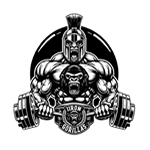
The development of oral anabolic steroids, including prominent ones like Anavar (Oxandrolone) and Turinabol (Chlorodehydromethyltestosterone), was spearheaded by various pharmaceutical companies and chemists in the mid-20th century. The primary contributors to this field were scientists from the United States and Germany.
The journey of oral anabolic steroids began in earnest in the 1950s and 1960s. These substances were synthesized as derivatives of testosterone, the primary male sex hormone. Scientists modified the chemical structure of testosterone to enhance desirable properties like anabolic (muscle-building) effects while minimizing androgenic (masculinizing) effects. This was achieved by altering the molecular structure to enable oral ingestion and to survive metabolism in the liver.
The first Oral Steroid.
The first oral anabolic steroid to be introduced to the market was Methandrostenolone, better known by its brand name, Dianabol. Developed by Dr. John Ziegler with the assistance of the pharmaceutical company Ciba, Dianabol was released in the United States in the late 1950s.
This steroid was synthesized with the intention of maintaining the anabolic properties of testosterone with less androgenicity in a strong, orally active form. Methandrostenolone/Dianabol quickly gained popularity for its potent muscle-building effects and was widely used in the world of athletics and bodybuilding before concerns about its side effects led to increased regulation and control of anabolic steroids.
Dr. John Ziegler created Dianabol (Methandrostenolone) primarily to help American athletes compete more effectively against Soviet athletes in international competitions, particularly in the Olympic Games.
During the 1950s, it was widely believed that Soviet athletes were using testosterone to enhance their athletic performances. This gave them a significant advantage in strength and muscle mass over their American counterparts.
In response, Dr. Ziegler, who was an American physician and a part of the U.S. Olympic team’s medical staff, collaborated with the pharmaceutical company Ciba to develop an anabolic steroid that would help level the playing field. The goal was to create a compound that retained the anabolic (muscle-building) properties of testosterone while reducing the androgenic (masculinizing) effects. The result was Dianabol, which quickly became popular among athletes for its effectiveness in improving muscle mass and strength.
Thus, the creation of Dianabol was driven by the desire to enhance athletic performance and compete effectively in a landscape where performance-enhancing drug use was becoming increasingly common.
Why Were Oral Anabolic Steroids Created?
Medical Purposes: The primary motivation behind the creation of oral anabolic steroids was medical. They were developed to treat conditions involving muscle wasting, such as chronic diseases, severe burns, and post-surgical recovery. For instance, Anavar was specifically designed to help promote weight gain in various situations, to offset protein catabolism caused by long-term corticosteroid therapy, and to support recovery from severe burns.
Note: While most oral anabolic steroids were indeed developed for medical purposes, Dianabol (Methandrostenolone) presents a unique case. Dianabol was one of the first oral anabolic steroids developed, and its initial purpose was significantly tied to performance enhancement, mainly to counteract the Soviet athletes’ use of testosterone in the 1950s.
Bone Density and Growth Disorders: These steroids were also used to treat bone pain associated with osteoporosis and to aid in the development of children with growth disorders. Their anabolic effects were beneficial in increasing bone mineral content and density, as well as in promoting overall growth and development.
Non-Medical Use: Despite their medical applications, oral anabolic steroids gained notoriety for their non-medical use, particularly in sports and bodybuilding. Athletes and bodybuilders began using these substances for their musclebuilding and performance-enhancing effects. This led to widespread use in competitive sports, resulting in numerous doping scandals and the eventual reclassification and regulation of these substances.
Oral anabolic steroids were created primarily for medical purposes to address conditions involving muscle wasting, bone health, and growth disorders. However, their potent anabolic effects led to their adoption in sports and bodybuilding, overshadowing their medical applications and leading to regulatory changes and controversies surrounding their use.


